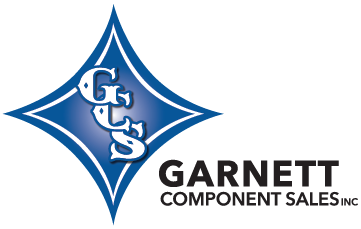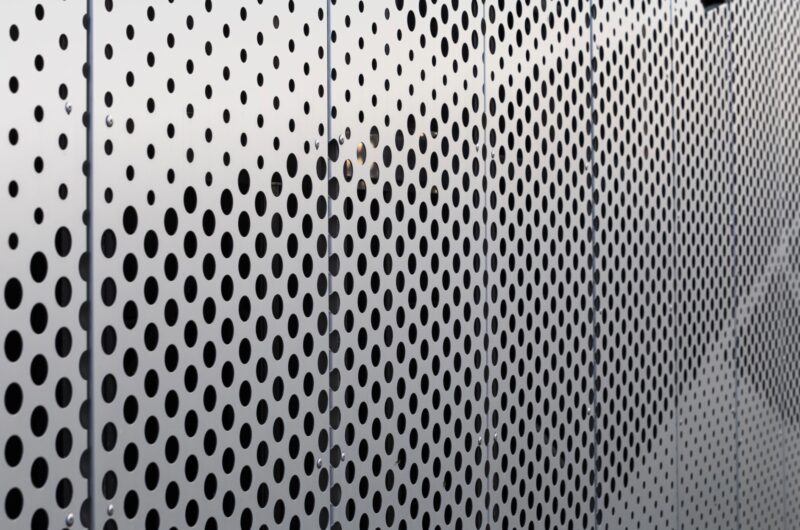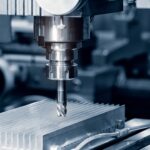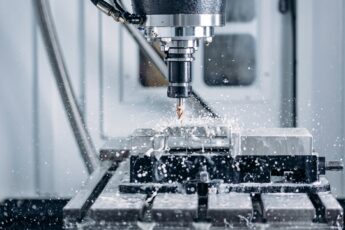Warping and distortion can completely throw off a perforated metal project. When metal doesn’t hold its shape, it can lead to misaligned parts, weakened load-bearing capacity, or even total failure once it’s installed. These issues don’t just affect the look of the final product, they also mess with performance and safety.
Whether you’re making panels for screens, guards, or architectural cladding, keeping the metal flat and true from start to finish is a must. Without the right planning and techniques, it’s easy to run into problems like buckling, twisting, or uneven stress. These issues often come from temperature extremes, poorly matched materials, or improper handling. Recognizing what causes warping early can help you avoid expensive fixes and wasted materials later.
Understanding Warping And Distortion In Perforated Metal
Warping and distortion happen when something causes the metal to change shape in ways that weren’t planned. These shifts could be small twists or bends, or large-scale deformations across a sheet. Even subtle warps can cause sheets to not fit or line up where they’re supposed to, which becomes a major problem in projects that rely on clean lines, structural support, or tight tolerances.
Here are some of the most common causes:
– Thermal stress: When metal heats up and cools unevenly, it expands and contracts in different spots, leading to warping. This is especially common during welding or cutting if the heat isn’t spread evenly.
– Mechanical strain: Too much pressure during forming or punching can create uneven stress in the metal. Over time, that strain may cause shifts in shape.
– Material choice: Using thin or soft metals without properly accounting for stiffness or support can lead to unintended bending under weight or tension.
– Improper handling: Dropping panels, stacking them unevenly, or transporting them without support can all lead to small bends that grow worse during fabrication or installation.
The earlier you spot these risks, the more options you’ll have to fix them. During planning stages, it’s a lot easier to change a few specs than it is to deal with warped panels pulled off the production line or job site.
Best Practices For Preventing Warping
To stop warping before it starts, a strong design is where it all begins. The choices made at this stage set the tone for everything that follows, including material stability and layout balance.
Focus on these points when setting your design:
1. Choose the right material and thickness. Some metals resist heat and pressure better than others. Thicker sheets offer more natural resistance to buckling but may be harder to punch. Pick what’s right for your specific application.
2. Keep the design symmetrical. Uneven shapes or hole patterns can force the metal to flex or twist under pressure. A balanced pattern helps distribute forces more evenly.
3. Use accurate cutting and punching tools. Poor tooling can create extra stress along cut lines. Laser or precision cutting with well-maintained machines helps minimize deformation.
4. Test stress points. Identify where high pressure or heat will be applied during fabrication. Adjust or reinforce those areas in the design.
5. Don’t over-perforate. Filling too much of the panel with holes weakens its overall structure. Leave enough solid metal between openings to support the weight and forces it’ll handle.
Just as an example, we worked on a project that involved perforated covers for heavy-duty equipment. The initial design had fine holes spread out unevenly across thin sheet metal. During punching, the sheets flexed so much that they didn’t sit flat. After reviewing the design, we recommended a thicker material and adjusted the pattern to be symmetrical. The next batch ran smoothly, and every sheet came out flat.
Putting time into this kind of planning makes a big difference. It prevents problems before production even starts and gives your team a better shot at keeping everything on track.
Managing Thermal Stress During Fabrication
Thermal stress is one of the most common causes of warping in perforated materials. It happens when different parts of a metal sheet heat and cool at different rates, which puts uneven pressure across the surface. This imbalance causes the sheet to expand on one side and contract on the other, twisting it out of shape. If this isn’t managed carefully during fabrication, you might deal with major inconsistencies that are hard to fix later.
One way to reduce thermal stress is through controlled heating and cooling. If you’re cutting or welding, apply heat slowly and avoid focusing on one area too long. Let the metal return to room temperature on its own instead of forcing it to cool quickly. Rushing this stage can lock in stress that wasn’t there before. In many cases, working in a well-ventilated space where airflow helps disperse heat evenly can make a difference.
Spacing is also important. Sheet layouts that are too tight don’t allow air to circulate, which can trap heat in some spots while others remain cool. Incorporating thermal breaks or spacing the material during processing can help keep temperatures more consistent throughout.
Another smart move is using thermal insulation on tools that hold or press the sheet during forming. This keeps heat from transferring too quickly, especially when metal touches other metal parts. For applications that need high heat, try using clamps or supports that are insulated or less heat conductive to reduce uneven heating.
One project we handled involved high-temperature punching for industrial panels. The sheets were being stacked right after punching, which caused the residual heat to stay trapped and warp the bottom layers. By adjusting the stacking system to allow airflow and reducing the punching speed slightly, we managed to keep the panels flat and avoid waste.
It’s all about being proactive. Once thermal stress travels through the sheet, the damage is usually done. Building thoughtful steps into the process now can save a lot of time and material loss later.
Safe Handling And Storage Practices
Even top-notch materials with the smoothest fabrication can still get damaged with poor handling. Perforated metal sheets, depending on their thickness, can flex or bend easily if they’re not supported well. Warping from storage or transport might not seem obvious at first, but once the panels are installed, misalignments or ripples can appear.
To prevent that, follow these basic tips:
– Always support sheets from underneath when moving. Lifting from just one edge or corner can bend them permanently.
– Stack panels flat and never too high. Overstacking creates weight that bows lower sheets.
– Use spacers between stacked panels. This helps distribute pressure evenly and keeps surfaces from scratching each other.
– Cover metal with protective material when storing. This keeps moisture, dust, and debris off the surface, which could affect its structure or finish.
– Store in a dry, balanced environment. Areas with shifting temperatures or humidity may cause expansion and contraction if the sheets sit too long.
Also, make time for visual checks. Look for signs like small bends along edges, light warping at center points, or twist marks near corners. These can grow into larger shape issues later, especially if the panel is used as a faceplate or cover.
If your storage setup involves vertical stacking, be mindful of where the pressure sits. Sharp angles or uneven ground create stress points. Using flat pallets or solid-bottom racks is the better way to go.
Everything comes down to good habits. Even with heavy-duty materials, the wrong move during transport or while placing on a shelf can undo hours of careful design and planning.
Keeping Perforated Metal Projects On Track
Avoiding warping and distortion isn’t just about the design or the tools you use. It’s a full-process focus that starts at planning and runs through fabrication, transport, and installation. When the plan accounts for how metal will behave under stress, it’s easier to keep it in shape from start to finish.
Stay ahead of problems by sticking to a workflow that makes quality a habit. Use balanced designs, control heat application, and treat each sheet carefully during every step of handling. Doing all this consistently lowers the chance of surprises when it’s time to assemble.
It’s also worth checking in often throughout the project. Fixing an issue early, before it affects four or five panels, is always easier than reversing the damage once it spreads deeper into production. Little things like slow cooling, laying sheets flat, or adjusting storage angles add up to better long-term results.
When sheets hold their shape, parts fit as they should and installations go smoothly. That’s how good planning and careful execution add up to successful projects that don’t break budget or schedule.
Achieving precision with your projects requires diligence and the right techniques to handle perforated materials. For more insights on how to maintain the quality and stability of your metal projects and stay ahead of potential issues, explore our resources. At Garnett Component Sales, we’re committed to helping you create structures that last. Let us provide the expertise you need to ensure your next project runs smoothly.








